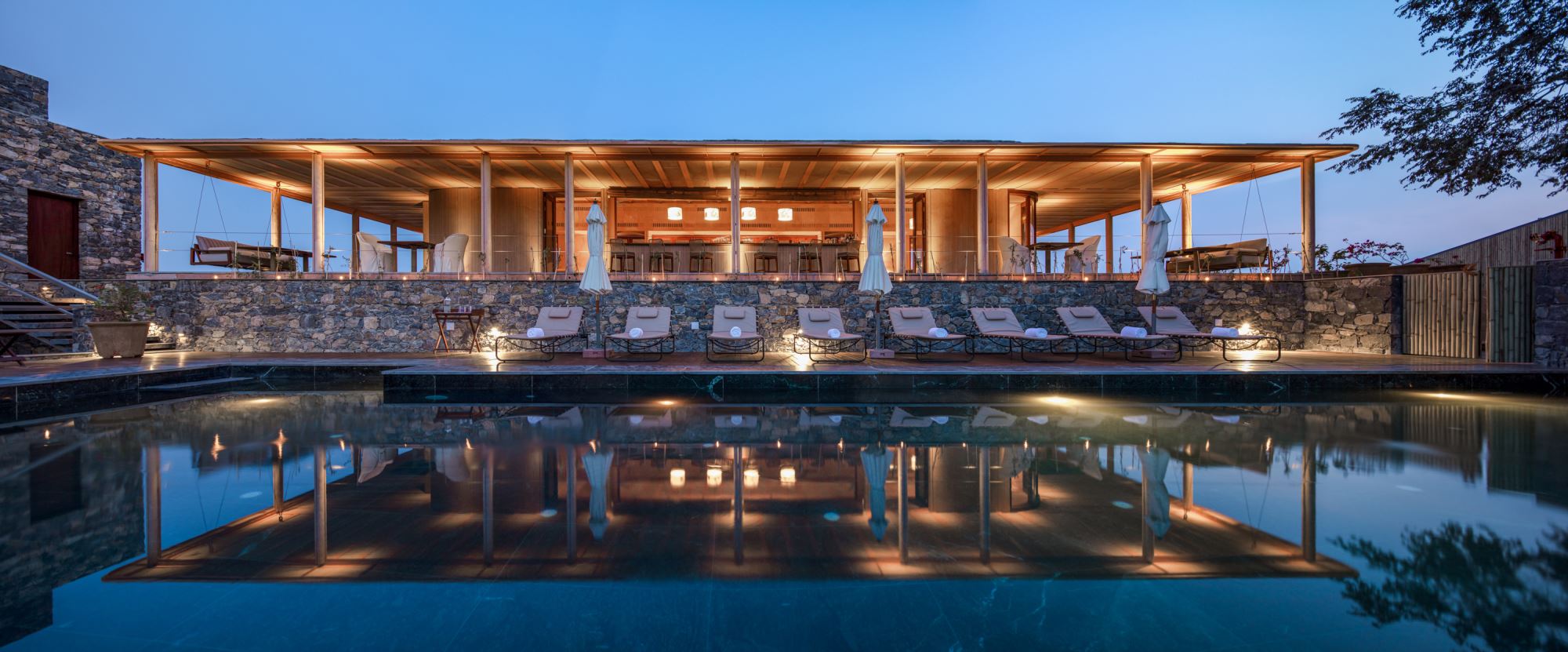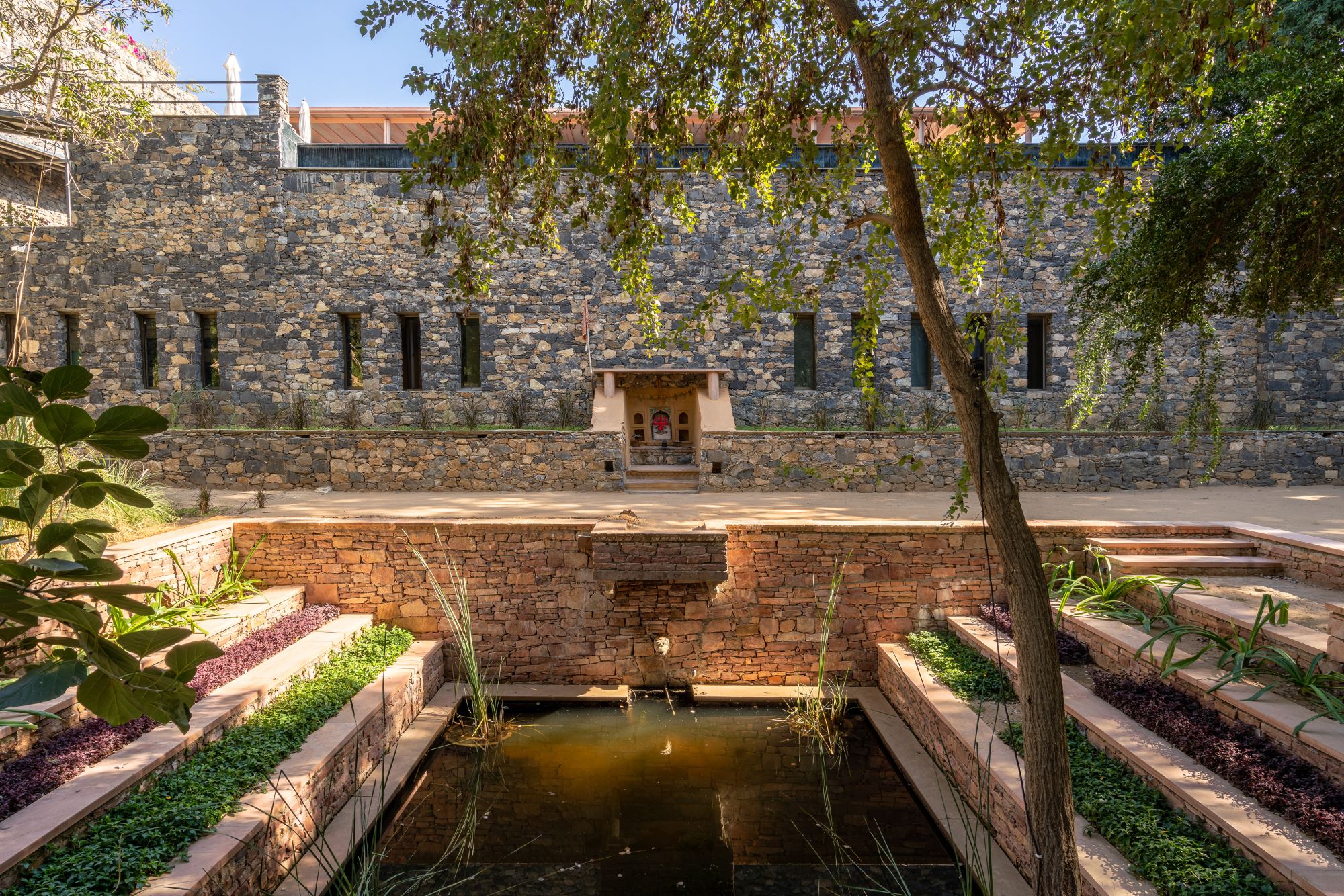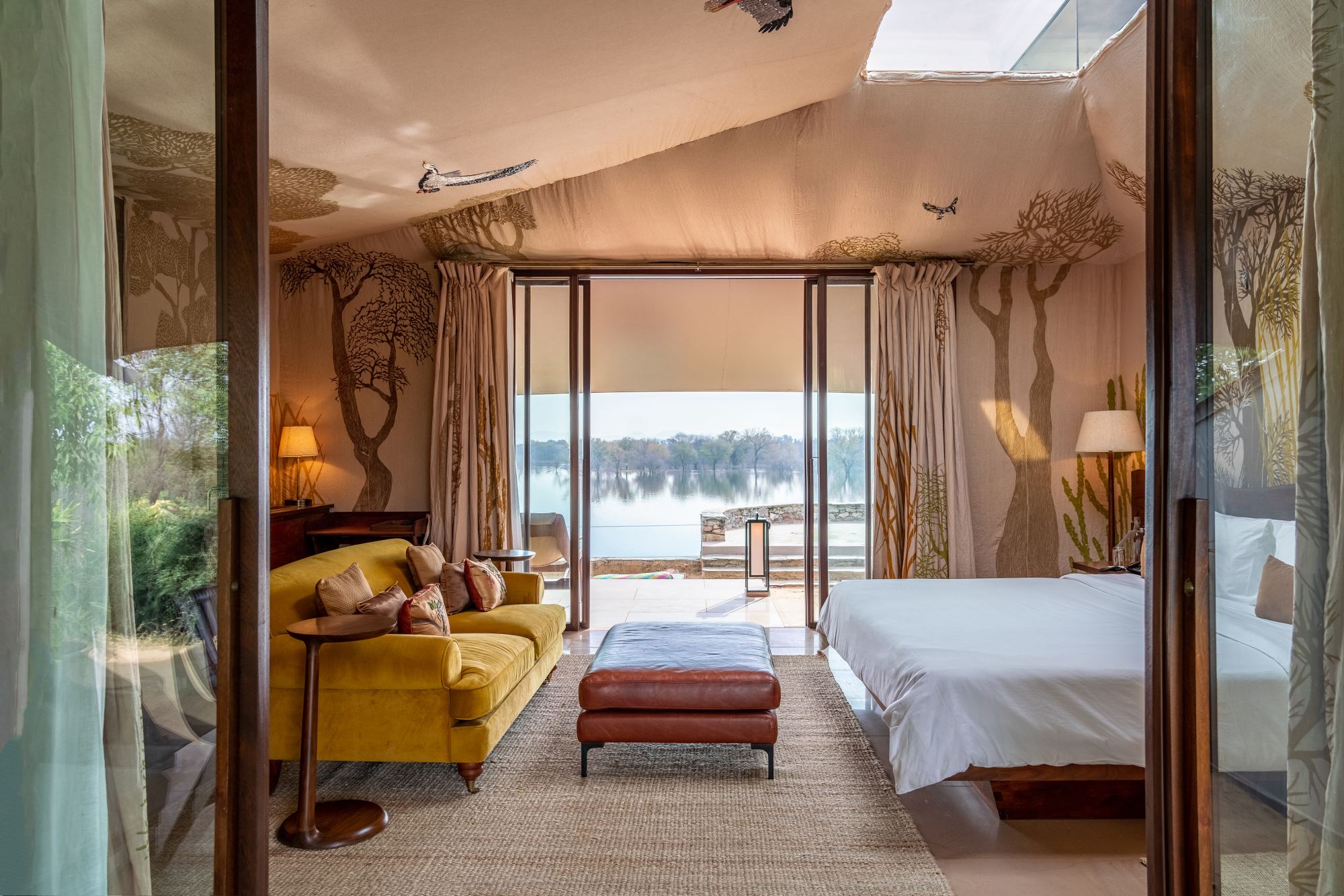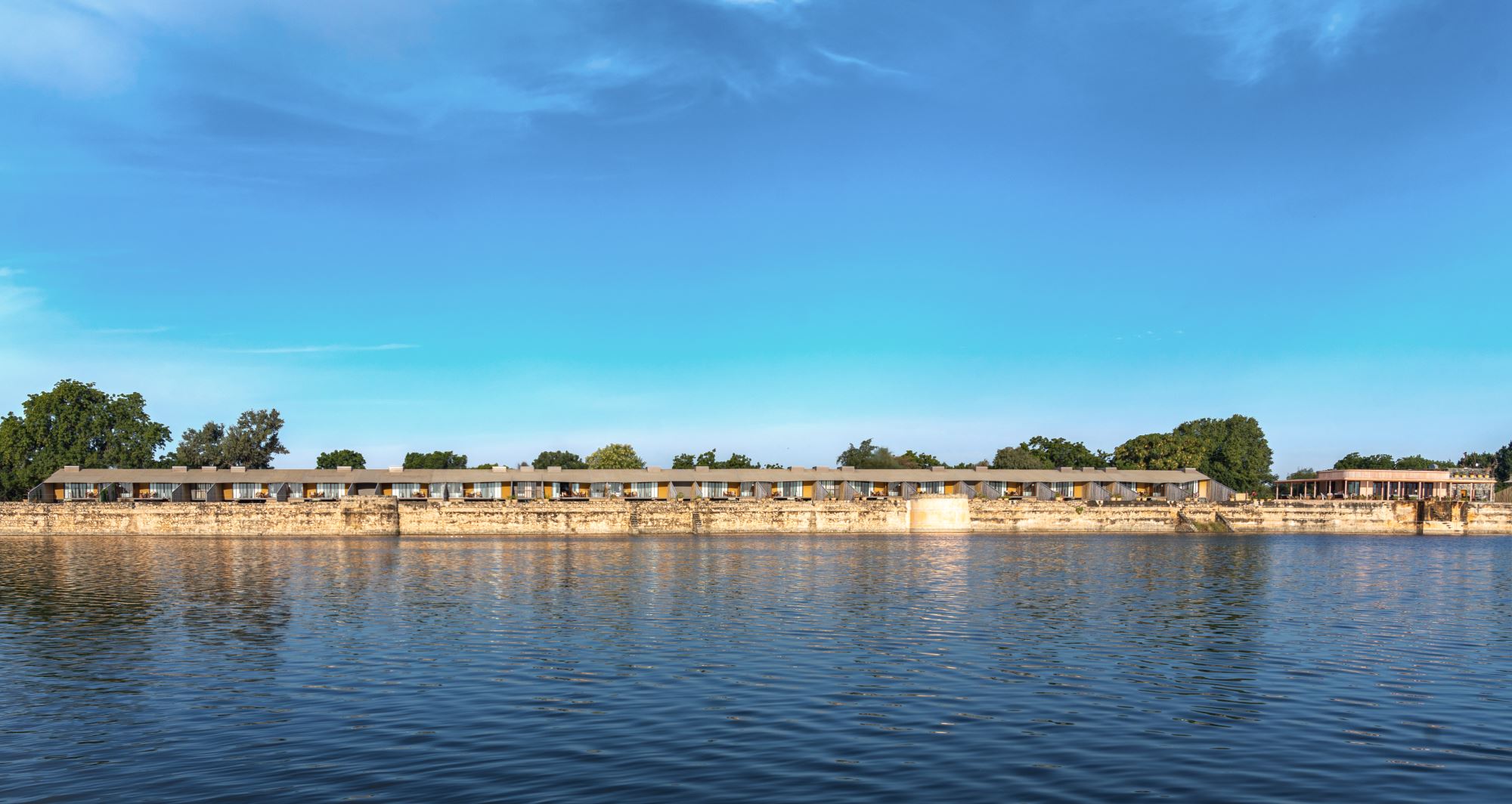Category B-2: Public Amenity Resort Buildings
Honorable Mention
Award credit: Studio Lotus
Location: Rajasthan, India
Photography: Avesh Gaur, Studio Noughts & Crosses LLP
RAAS Chhatrasagar is a sixteen-key eco hotel perched atop a century-old dam on the banks of the Chhatrasagar Lake in Nimaj, Rajasthan, India and expands the erstwhile temporary tourist camps set up across the embankment. The lush nature on the property provides guests with a year-round opportunity to observe the region’'s abundant biodiversity amidst 800 acres of pristine forest.
Chhatrasagar Lake is an artificial lake formed in the late nineteenth century when a local Rajput noble created an embankment across a tributary to the rain-fed Luni River, with the intent to provide farmers a continuous water supply for irrigation. Replenished by monsoon showers, the reservoir soon transformed the nearby scrubland into a lush arable tract. Over the years, the property mushroomed into a vast stretch of forest, attracting wildlife and native avifauna, including migratory bird species. Most farming activities were suspended nearly a couple of decades ago when the owners of the and decided to rewild the landscape; only a small parcel of the land was reserved for organic farming.
The original tourist camp consisted of an eleven-key tented hotel that was functional only from autumn to the end of winter. During the harsh summer months, it would be disassembled, and reassembled again when the next autumn arrives. It, unfortunately, also lacked visual and acoustic privacy and offered dismal insulation. The redesign replaces this temporary camp with a perennial property that would be resilient to the region’s extreme temperatures, and also increases the number of units from eleven to sixteen. Public spaces have also been enhanced with a more diverse amenity mix. The sensitive ecological context made it imperative that all additions to the locale be erected with minimal impact. To this end, a system of low-impact foundations and lightweight superstructures were designed, employing a dry construction methodology that used lime as a binder for the minimal wet work.












 loading......
loading......